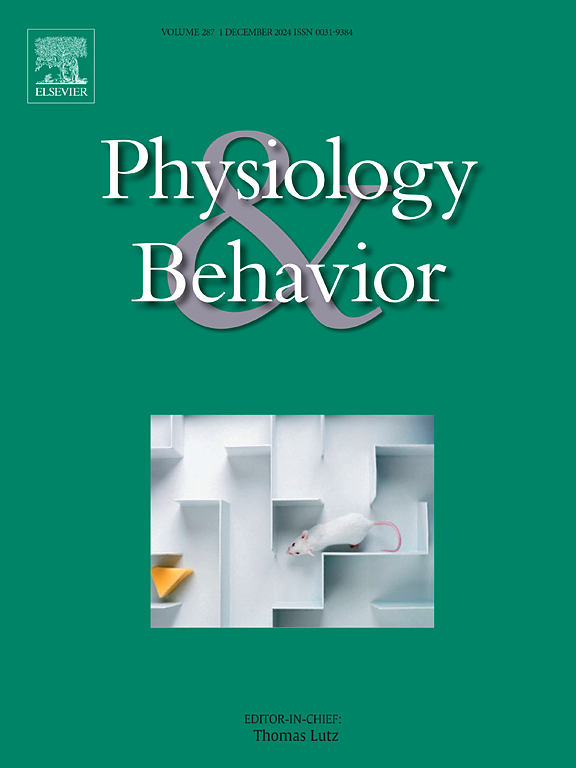The effects of real vs simulated high altitude on associative memory for emotional stimuli
IF 2.4
3区 医学
Q2 BEHAVIORAL SCIENCES
引用次数: 0
Abstract
Introduction
This study aimed to investigate the effects of normobaric hypoxia (NH) and hypobaric hypoxia (HH) on associative memory performance for emotionally valenced stimuli.
Methods
Two experiments were conducted. In Study 1, n = 18 undergraduates performed an associative memory task under three NH conditions (FiO2= 20.9 %, 15.1 %, 13.6 %) using a tent with a hypoxic generator. In Study 2, n = 20 participants were assessed in a field study at various altitudes on the Himalayan mountains, including the Pyramid Laboratory (5000 m above sea level), using functional Near-Infrared Spectroscopy (fNIRS) and behavioral assessments.
Results
Study 1 revealed no significant differences in recognition accuracy across NH conditions. However, Study 2 showed a complex relationship between altitude and memory for emotionally valenced stimuli. At lower altitudes, participants more accurately recognized emotional stimuli compared to neutral ones, a trend that reversed at higher altitudes. Brain oxygenation varied with altitude, indicating adaptive cognitive processing, as revealed by fNIRS measurements.
Conclusions
These findings suggest that hypoxia affects associative memory and emotional processing in an altitude-dependent manner, highlighting adaptive cognitive mechanisms. Understanding the effects of hypobaric hypoxia on cognition and memory can help develop strategies to mitigate its impact in high-altitude and hypoxic environments.
真实高海拔与模拟高海拔对情绪刺激联想记忆的影响。
研究简介本研究旨在探讨常压缺氧(NH)和低压缺氧(HH)对情绪化刺激联想记忆能力的影响:方法:进行了两项实验。在研究 1 中,18 名本科生在三个 NH 条件(FiO2= 20.9%、15.1%、13.6%)下使用带低氧发生器的帐篷完成了联想记忆任务。在研究 2 中,20 名参与者在喜马拉雅山脉的不同海拔高度(包括金字塔实验室(海拔 5000 米))进行了实地研究,并使用功能性近红外光谱仪(fNIRS)和行为评估进行了评估:研究 1 显示,不同 NH 条件下的识别准确率没有明显差异。然而,研究 2 表明海拔高度与情绪价值刺激记忆之间存在复杂的关系。与中性刺激相比,海拔较低时,受试者能更准确地识别情绪刺激,而海拔较高时,这一趋势发生逆转。脑氧饱和度随海拔高度的变化而变化,这表明认知过程具有适应性,fNIRS测量也揭示了这一点:这些研究结果表明,缺氧会以海拔依赖性的方式影响联想记忆和情感处理,突出了适应性认知机制。了解低气压缺氧对认知和记忆的影响有助于制定策略,减轻其在高海拔和缺氧环境中的影响。
本文章由计算机程序翻译,如有差异,请以英文原文为准。
求助全文
约1分钟内获得全文
求助全文
来源期刊

Physiology & Behavior
医学-行为科学
CiteScore
5.70
自引率
3.40%
发文量
274
审稿时长
47 days
期刊介绍:
Physiology & Behavior is aimed at the causal physiological mechanisms of behavior and its modulation by environmental factors. The journal invites original reports in the broad area of behavioral and cognitive neuroscience, in which at least one variable is physiological and the primary emphasis and theoretical context are behavioral. The range of subjects includes behavioral neuroendocrinology, psychoneuroimmunology, learning and memory, ingestion, social behavior, and studies related to the mechanisms of psychopathology. Contemporary reviews and theoretical articles are welcomed and the Editors invite such proposals from interested authors.
 求助内容:
求助内容: 应助结果提醒方式:
应助结果提醒方式:


